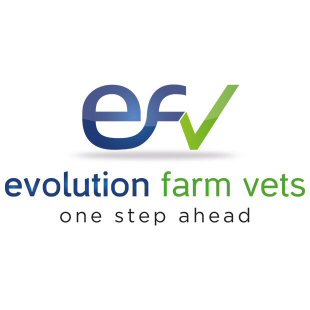Milk Fever, also known as hypocalcaemia or parturient paresis, is the most common metabolic disease affecting dairy cattle, affecting around 5-10% cows annually. It usually presents as a down cow around calving. However this presentation could be many other diseases so a thorough history and clinical exam is essential.
Aetiology
Around calving the cow has a huge increase in demand for calcium for colostrum production. Cows with milk fever cannot mobilise calcium from bone or increase absorption from the gut quick enough. This means the cow cannot perform it's normal functions involving calcium such as muscle contraction. Therefore you see signs of weakness, ataxia, recumbency, dystocia or bloat.
Risk Factors:
- 3rd lactation or more
- Breed e.g. Jerseys
- Previous history of milk fever
- Complete milking after calving
- High calcium diet during dry period
- Low magnesium diet during the dry period
- Over fat cows
- Stress at calving
Clinical Signs
90% cases occur 24 hours before to 48 hours after calving
Stage 1: refusing concentrates, aggression/apprehension, ataxia, tremors, bloat
Stage 2: sternal recumbency, full udder, rectum distended with faeces, dry muzzle
Stage 3: lateral recumbency, bloat, reduced temperature, respiratory and heart rates
Treat as emergency! Prognosis is good if treated within 6 hours.
Treatment
Intravenous calcium into the jugular vein, given slowly to avoid cardiac arrhythmias
- If cardiac arrhythmias do occur STOP calcium administration, then give at a lower rate.
Subcutaneous calcium can be given in less severe cases.
Recovery: usually a rapid response
Heart rate falls and becomes louder, cow tries to stand, looks brighter
(Make sure cow has a room to stand and is on a non-slip surface)
If she doesn't respond to the treatment look for another cause, or may be secondary muscle ischaemia. See Down Cow Syndrome for a discussion of these.
Prevention
Dry cows off at body condition score 2.5-3 and maintain until calving
Dry period nutrition - Low concentrates and high fibre
Low calcium diet
Dietary Cation Anion Balance (DCAB) - acidifies the diet
Calcium boluses e.g. Bovikalc - administered at first signs of calving, immediately after calving and 12 hours later if necessary. Contains calcium chloride and calcium sulphate, so may also have a DCAB affect
Sub-Clinical Milk Fever
Most often presents as a cow showing signs of calving but doesn't go into second stage labour.
Give calcium IV and she should go into labour.
